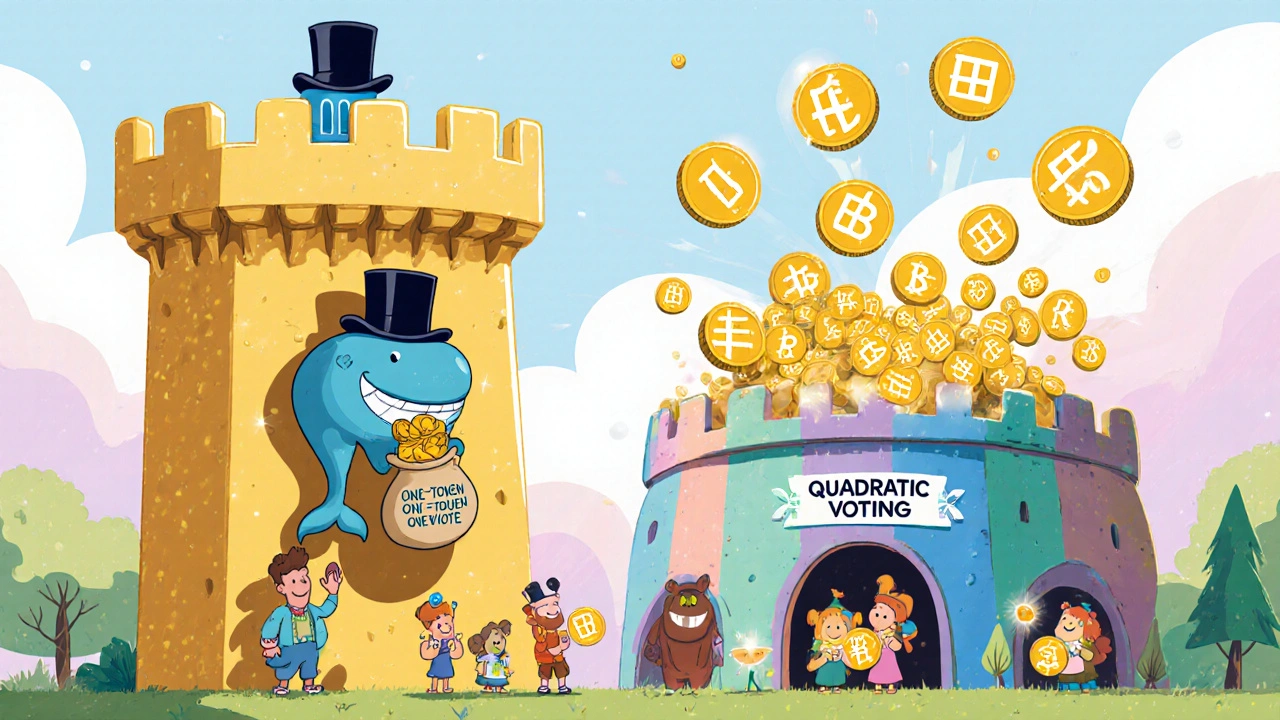One-Token-One-Vote: How Decentralized Voting Works in VoIP and Communication Systems
When you hear one-token-one-vote, a governance model where each participant holds one digital token that equals one vote. Also known as token-based democracy, it’s not just for crypto projects—it’s quietly reshaping how open-source VoIP tools, community-run SIP networks, and decentralized communication platforms make decisions. Unlike top-down corporate systems where engineers or executives decide what features get built, one-token-one-vote gives power to users. If you’ve ever contributed to a VoIP forum, tested a new SIP client, or voted on a feature in an open-source PBX, you’ve seen it in action.
This model matters because VoIP isn’t just hardware and codecs—it’s a living ecosystem. Think of SIP protocol, the standard that lets phones, servers, and apps talk over IP networks. Who decides whether G.711 stays supported over Opus? Who picks the next default DSCP marking? In closed systems, it’s the vendor. In open ones, it’s the community—using tokens to vote. That’s why projects like Asterisk, FreeSWITCH, and even some ZRTP implementations rely on token-based voting to avoid feature bloat and maintain stability. It’s not about popularity—it’s about weighted participation. A user who runs a call center with 50 phones and contributes code has the same vote as someone who just downloaded the app. That’s the fairness.
And it’s not just about features. blockchain communication, a niche but growing field using distributed ledgers to secure call metadata and authenticate endpoints, is testing one-token-one-vote for network upgrades. Imagine voting on whether your provider should switch from TLS 1.2 to 1.3, or whether call recording logs should be stored locally or in the cloud. With one-token-one-vote, you’re not just a customer—you’re a stakeholder. This shifts power away from big corporations and toward the people who actually use the system. No more hidden updates. No more forced migrations. Just transparent, community-driven evolution.
What you’ll find in this collection are real-world examples of how this model plays out. From how open-source VoIP teams use token voting to prioritize bug fixes, to how SIP intercom manufacturers let users vote on firmware updates, to why some cloud contact centers are experimenting with token-based access controls. These aren’t theory pieces—they’re case studies from developers, admins, and small businesses who’ve lived it. You’ll see how it reduces friction, builds trust, and sometimes, even saves money by avoiding unpopular changes before they’re coded. This is governance you can actually use—no lawyers, no contracts, just votes and code.
